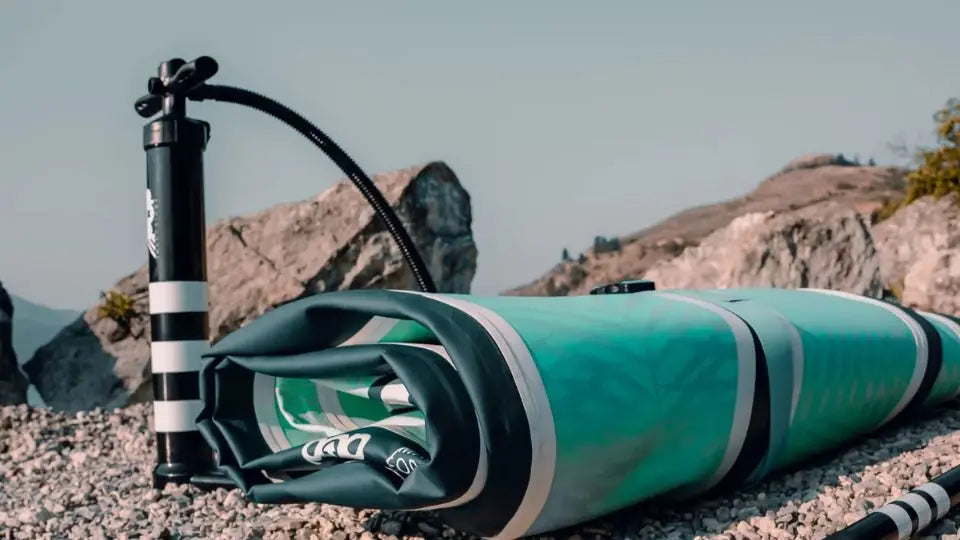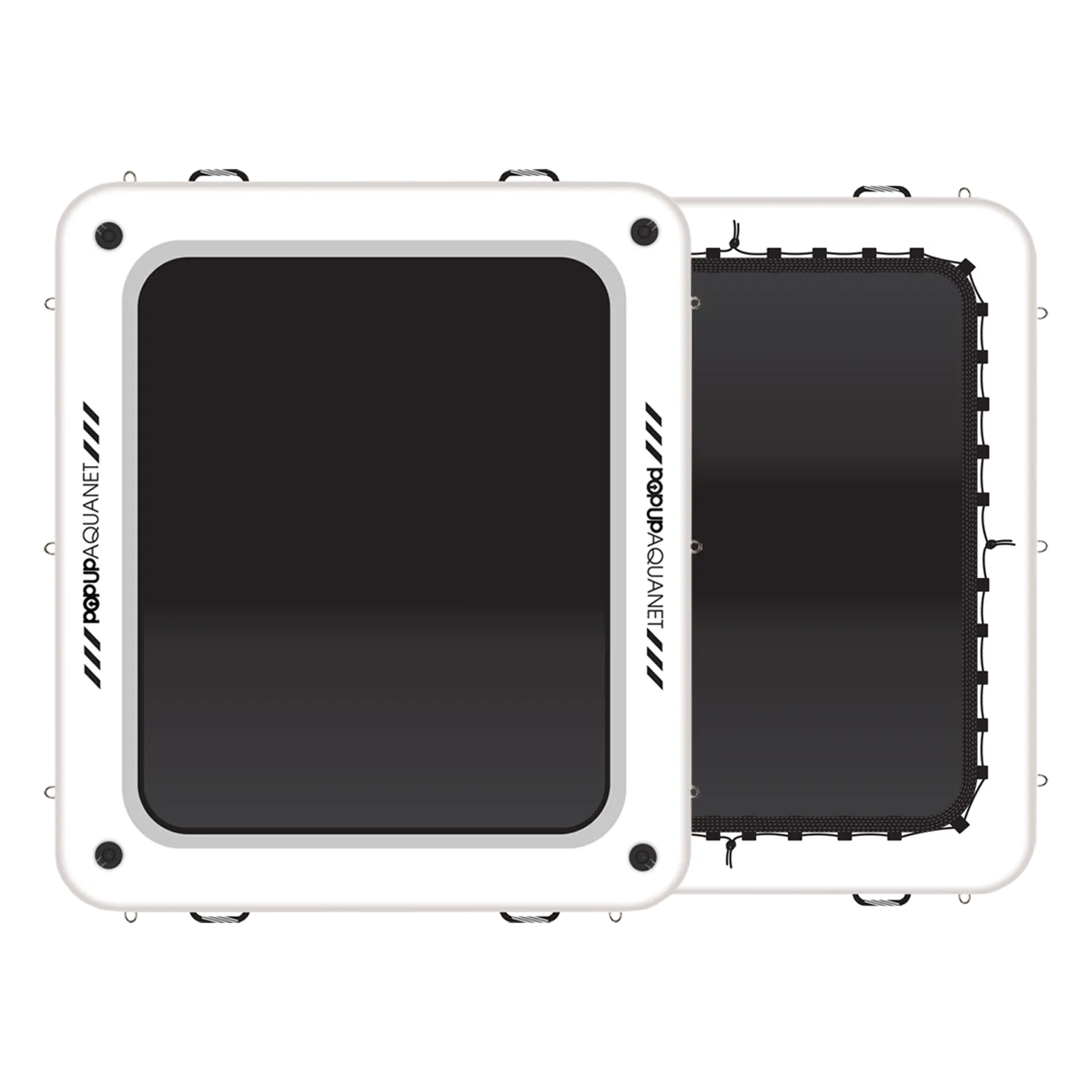Keep Your Inflatable Paddle Board in Top Shape: The Ultimate Storage Guide
Don't let a deflated, damaged board ruin your paddle season! Proper paddle board storage is key to avoiding frustration and keeping your gear performing at its best. At Canadian Board Co., we build tough, adventure-ready inflatables, and with the right care, yours will stay protected year-round. This guide will show you:
- Why smart storage is crucial for durability, performance, and safety
- How to prep your inflatable paddle board: clean, dry, deflate, and fold
- Easy short-term and everyday storage solutions for your busy life
- Long-term, winter-ready methods built for Canadian conditions
- The best indoor and outdoor spots, plus gear to maximize protection
- How to inspect and maintain your ISUP so it's always ready for adventure
First things first: let's dive into why proper storage is so important for your inflatable paddle board's longevity.
Why Does Proper Storage Matter for Your Inflatable Paddle Board?
Smart storage keeps your board's shape, prevents material wear, and ensures consistent performance. By managing environmental factors and following a simple routine, proper storage extends ISUP lifespan, making every paddle feel as responsive as the first.

How Does Proper Storage Extend the Lifespan of Your ISUP?
Proper storage protects your inflatable paddle board from UV damage, moisture, and stress on the seams. Our commitment to quality, like in the 11’6" El Capitan Inflatable Paddle Board, means that robust construction and correct storage work hand-in-hand.
- Store deflated boards loosely rolled to prevent permanent creases.
- Keep boards out of direct sunlight to stop PVC breakdown.
- Use a breathable bag to allow airflow and prevent trapped moisture.
Emptying valves and storing your board in a cool, dark place ensures proper storage – extends – inflatable paddle board lifespan without creating stress points that could lead to leaks or delamination.
What Are the Risks of Improper Storage?
Improper storage can lead to mould, seam failure, and brittle materials.
| Potential Risk | Underlying Cause | Resulting Damage |
|---|---|---|
| Mould and Mildew | Trapped moisture | Unpleasant odours and material decay |
| UV Degradation | Sun exposure | Weakened PVC and faded colour |
| Creasing and Material Stress | Tight folding or sharp bends | Permanent shape distortion |
Leaving your board in a damp or sunny spot speeds up wear and tear, while poor folding can put stress on seams, potentially causing them to separate. Understanding these risks naturally leads us to the preparation steps that prevent damage from happening in the first place.
How Does the Canadian Climate Affect Paddle Board Storage?
Canadian winters mean freezing temperatures and high humidity, which can warp and stress inflatable materials. Coastal areas add salt mist corrosion, and even basements can hold residual dampness. Considering seasonal demands, the 11’0" Yacht Hopper Teak Blue Mint 2024 Inflatable Paddle Board shows how climate-specific care helps maintain its finish and rigidity.
By adapting your storage location and monitoring the environment, you ensure a cool, dry environment – protects – ISUP material through extreme seasonal changes.
Effect of Accelerated Thermal Degradation of Poly(Vinyl Chloride): The Case of Unplasticized PVC
Research indicates that the thermal degradation of unplasticized polyvinyl chloride (PVC) is significantly influenced by environmental factors. Studies show that higher relative humidity can accelerate the discoloration and degradation of PVC materials when exposed to elevated temperatures, such as those between 60°C and 80°C. This process can lead to visible yellowing of the material over time.
This research supports the article's claim that proper storage is crucial for preventing material degradation and maintaining the appearance of inflatable paddle boards, especially by controlling temperature and humidity.
How Do You Prepare Your Inflatable Paddle Board for Storage?
Preparing your inflatable paddle board means giving it a thorough clean, ensuring it's completely dry, and then carefully deflating and folding it. Each step removes potential threats to the material and sets the stage for successful storage, no matter how long.
What Is the Best Way to Clean an Inflatable Paddle Board Before Storage?
Cleaning your inflatable paddle board before storing it prevents salt buildup, dirt abrasion, and mould growth.
- Rinse the entire board with fresh water to wash away sand and salt.
- Use a mild soap solution and a soft cloth to remove oils and grime.
- Rinse again thoroughly to get rid of any soap residue.
These steps ensure that thorough cleaning – prevents – mold growth, setting you up perfectly for the drying phase.

How Do You Thoroughly Dry Your ISUP to Prevent Mould?
Complete drying is essential to stop mildew and keep seams strong. Use a gentle airflow approach:
- Lay the board flat or hang it in a shaded, well-ventilated spot.
- Wipe down valves and creases with a dry microfiber towel.
- Remove fins and attachments until the board is completely dry.
Making sure there are no damp spots is the direct path to a mould-free storage environment and the next crucial step: safe deflation.
What Are the Correct Deflating and Folding Techniques?
Proper deflation and folding protect the board's material structure and prevent creases and stress points.
How Do You Use a Pump and Valve for Safe Deflation?
Open the valve fully, then use your pump in reverse to gently extract air until the board is soft but not completely flat.
- Connect your pump nozzle to the valve just as you would for inflation.
- Reverse the pump action gently to control the air release.
- Leave a small cushion of air to avoid creating hard folds.
Developing the right deflation routine prepares you for folding the board correctly, avoiding sharp bends that can damage PVC coatings.
What Folding Patterns Prevent Creases and Material Stress?
Use a loose "accordion" fold to distribute bends evenly and minimize tight creases:
- Fold the board in half lengthwise, with the fins facing inward.
- Create zig-zag pleats, keeping them no wider than knee-width.
- Roll loosely from the nose towards the tail.
Adopting this folding pattern means correct folding – avoids – creases and material stress, keeping your board ready for easy reinflation.
What Are the Best Short-Term Storage Options for Inflatable Paddle Boards?
Short-term storage is all about balancing quick access with protection for daily or weekend use. Whether you keep the board inflated or deflated depends on how often you paddle and how much space you have.
Should You Store Your Paddle Board Inflated or Deflated for Short-Term?
Storing your ISUP slightly inflated helps it keep its shape and be ready to go, while deflated storage saves precious space in tight garages.
| Storage Mode | Advantage | Consideration |
|---|---|---|
| Partially Inflated | Ready for instant use for daily paddling | Requires a stable temperature environment |
| Deflated | Compact and easy to stow away | Needs a little extra prep before hitting the water |
Balancing these factors lets you get on the water quickly without compromising your board's condition.
How Can You Store Your ISUP Safely in a Garage or Shed?
Indoor spaces like garages or sheds can experience temperature fluctuations and attract pests. Protect your board by keeping it off the floor and inside a breathable bag. Storing it with other gear, like the Pop-Up AquaDock, keeps your inflatables together and protects surfaces from scratches.
Keeping boards off concrete floors and away from direct heat sources helps maintain a stable environment, leading us naturally into quick-use storage tips.
What Are Quick Storage Tips for Weekend or Daily Use?
For weekend adventures and daily paddling sessions, follow these handy tips:
- Hang the board on a padded wall rack to save floor space.
- Keep your pump, leash, and paddle in a nearby container for easy access.
- Store the board under a cover to shield it from dust and UV rays.
These simple measures combine convenience with protection, setting you up perfectly for longer-term storage strategies.
How Do You Store an Inflatable Paddle Board for Long-Term and Winter Storage?
Long-term and winter storage require controlled temperature, humidity, and UV protection to prevent material wear and pest damage. Think of this phase as a preservation project for your board.
What Are the Ideal Temperature and Humidity Conditions for Long-Term Storage?
Maintaining a cool, dry environment slows down PVC ageing and prevents mould from forming.
| Condition | Optimal Range | Impact |
|---|---|---|
| Temperature | 10 °C to 20 °C | Reduces material brittleness and warping |
| Humidity | 30 % to 50 % RH | Prevents moisture-related decay |
Meeting these conditions means a cool, dry environment – preserves – ISUP material throughout extended off-season periods.
Mould growth in energy efficient buildings: Causes, health implications and strategies to mitigate the risk
Mould growth is significantly influenced by environmental conditions, particularly humidity and temperature. To effectively prevent mould, it is recommended to maintain indoor relative humidity levels below 60%, with an ideal range typically falling between 30% and 50%. Controlling these factors is crucial for preserving material integrity and preventing moisture-related decay.
This research provides scientific backing for the article's recommendations regarding optimal humidity conditions for long-term storage to prevent mould and mildew on inflatable paddle boards.
How Do You Winterize Your Inflatable SUP for Canadian Climates?
Winterizing your paddle board for Canadian winters means completely deflating it, removing the fins, and storing it indoors. Placing the board in a climate-controlled room—perfect for seasonal gear—protects it from freezing damage. Making this part of your off-season routine ensures spring reinflation is a breeze, just like following a Canadian Board Co. YouTube demonstration on proper technique.
How Can You Prevent Mould, Mildew, and Pest Damage During Storage?
Preventing mould, mildew, and pests requires keeping things dry, clean, and sealing up any entry points:
- Use moisture absorbers or silica packs inside the board bag.
- Seal mesh vents on racks to keep insects and rodents out.
- Check your storage area monthly for any signs of dampness or pests.
These precautions complete the winterization process and naturally lead into UV protection methods.
Why Is UV Protection Important and How Do You Ensure It?
UV radiation slowly breaks down PVC fibres, leading to brittleness and colour fading. To protect your board:
- Store it in an opaque, UV-resistant bag.
- Keep stored boards away from bright light sources.
- Apply a UV protectant spray before packing if the board might be exposed to sun occasionally.
Adding UV protection ensures that UV protection – prevents – material degradation and keeps your inflatable looking vibrant for longer.
The Sun and My Inflatable Friend (or Foe?)
Ultraviolet (UV) radiation from the sun is a significant factor in the degradation of inflatable boat materials. UV light breaks down chemical bonds within the material, leading to adverse effects such as cracking, increased brittleness, fading of colors, and general discoloration. Protecting inflatable equipment from direct sunlight is essential to mitigate these damaging effects.
This information directly reinforces the article's emphasis on UV protection as a critical measure to prevent material degradation and prolong the lifespan and vibrant finish of inflatable paddle boards.
What Are the Best Storage Locations and Accessories for Inflatable Paddle Boards?
Choosing the right location and using the right accessories adds extra layers of defence against environmental threats. Combining proper placement with quality gear optimizes your board's protection.
How Do You Store Your ISUP Indoors for Maximum Protection?
Indoor storage using a dedicated rack or wall mount keeps your board secure and off potentially damp floors. A padded wall hook or a horizontal rack system distributes weight evenly and prevents stress points, preserving the board’s drop-stitch integrity.
What Are the Benefits of Using Storage Bags, Racks, and Wall Mounts?
Using purpose-built accessories offers three main advantages:
- Protection from Dust and Sunlight – bags block light and debris.
- Space Efficiency – racks and mounts free up floor space.
- Shape Retention – supports prevent sagging or deformities.
These benefits reinforce the idea that the right accessories truly enhance long-term care strategies.
Which Canadian Board Co. Accessories Support Proper Storage?
Every Canadian Board Co. inflatable board comes with a high-quality, rip-stop SUP bag, often featuring wheels for easy transport, like our wheeled SUP bags. We also offer other durable storage solutions designed for ISUPs, including the robust AquaDock system and padded wall mounts. The Inflatable Pop-Up Chair Set and Inflatable Pop-Up Dock showcase portable gear options that complement SUP accessories and align with storage best practices.
How Do You Inspect and Maintain Your Inflatable Paddle Board After Storage?
After storage, a thorough inspection and routine maintenance will keep your board ready for the water. Catching any issues early means no surprises on launch day.
What Should You Check Before Using Your ISUP Again?
Inspect the seams, valves, and surface material:
- Look for tiny cracks or discolouration along the seams.
- Test valve function by briefly inflating a section.
- Check the deck pad for any grit or signs of wear.
This checklist ensures that any minor concern is addressed before you hit the water.
How Do You Perform Minor Repairs and Maintenance?
Minor repairs typically involve patch kits and tightening valves:
- Clean the damaged area thoroughly before applying a PVC repair patch.
- Allow the adhesive to cure completely in a shaded spot.
- Tighten valve caps and replace O-rings if they look worn.
Completing these tasks restores your board’s integrity and guides you toward professional help if needed.
When Should You Seek Professional Help for Paddle Board Care?
Get expert assistance for large tears, delamination, or valve failures that your repair kit can't handle. Professional service centres use heat bonding and specialized adhesives for complex fixes, extending your board’s life beyond DIY capabilities.
What Are the Most Common Questions About Inflatable Paddle Board Storage?
Paddle board owners often ask about inflation levels, outdoor storage risks, mould prevention, and packing for travel. Understanding these common questions helps refine your storage practices.
Should I Store My Inflatable Paddle Board Inflated or Deflated?
For long-term storage, deflate your board, clean it thoroughly, and roll it loosely in a cool, dark place to prevent material stress and mould. For short-term or daily use, storing it partially inflated helps maintain its shape.
Can You Store an Inflatable Paddle Board Outside Safely?
Outdoor storage exposes boards to UV rays, temperature swings, and pests, so avoid leaving them unprotected. If you must store it outside, use a lockable, ventilated container with a UV-resistant cover to minimize risks.
How Do You Prevent Mould on an Inflatable Paddle Board?
To prevent mould, ensure your board is completely dry before packing, clean it with fresh water and mild soap, and store it in a breathable bag with moisture absorbers, always avoiding damp or humid conditions.
How Do You Pack an Inflatable Paddle Board for Storage or Travel?
When packing for storage or travel, deflate it to a gentle fold, roll it loosely, and place it in its storage bag. Secure your paddle and pump inside the bag to protect all your gear and make transport easier.
Proper paddle board storage transforms one of your most important water sports investments into gear that lasts a lifetime. Following these steps optimizes performance, cuts down on repair costs, and ensures every outing feels as fresh as the first. For tailored accessories and expert advice, check out Canadian Board Co.’s full range of inflatable boards and gear.






Leave a comment
All comments are moderated before being published.
This site is protected by hCaptcha and the hCaptcha Privacy Policy and Terms of Service apply.